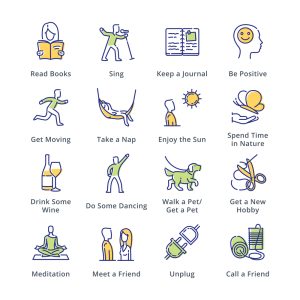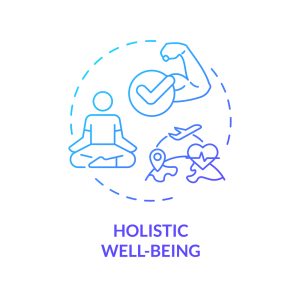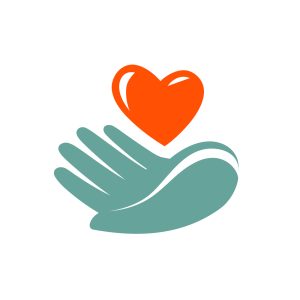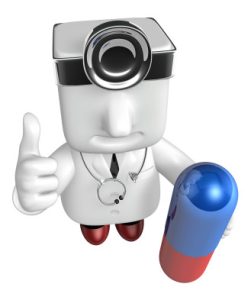By – James M. Katz, BA
Healthcare ethics plays a crucial role in shaping medical practices and end-of-life options. The debate surrounding assisted suicide has become a focal point in discussions about patient autonomy and the principles of healthcare ethics. This complex issue involves legal, moral, and medical considerations that impact patients, healthcare providers, and society as a whole.
This article explores the evolution of assisted suicide laws and examines ethical arguments both for and against the practice. It delves into the role of physicians in assisted suicide and considers the potential societal implications of legalizing this end-of-life option. The discussion also touches on related topics such as hospice care, palliative care, and the concept of death with dignity, providing a comprehensive overview of this challenging healthcare ethics issue.
Healthcare Ethics and the Evolution of Assisted Suicide Laws
Historical context
The debate surrounding assisted suicide has a long and complex history, rooted in ancient philosophical and medical traditions. In ancient Greece and Rome, physicians sometimes offered drugs to their patients with the intent to commit suicide. However, major religions and the Hippocratic Oath condemned the practice of physician-assisted death. The modern debate over assisted suicide began in 1870 when Samuel Williams, a nonphysician, addressed a group of doctors and suggested that euthanasia, which he termed “mercy killing,” be considered for cases of untreatable illness.
Public support for euthanasia or physician-assisted death varied throughout the 20th century. There was an increase in support during the Great Depression era of the 1930s, which then decreased following the atrocities of World War II. In the 1980s, pathologist Jacob “Jack” Kevorkian brought physician-assisted death back into the national debate by developing a device for people to self-administer a lethal dose of medication. Kevorkian assisted his first patient in ending her life in 1990 and went on to assist 130 more patients over the next eight years.
Current legal landscape in the US
The legal landscape of assisted suicide in the United States has undergone significant changes in recent years. In 1997, Oregon became the first state to legalize physician-assisted death under its Death With Dignity Act. This act allows physicians to prescribe lethal medication to patients to self-administer to end their lives. Since then, several other states have enacted their own legislation to legalize physician-assisted death.
As of 2024, physician-assisted death, also known as medical aid in dying, is legal in eleven US jurisdictions: California, Colorado, the District of Columbia, Hawaii, Montana, Maine, New Jersey, New Mexico, Oregon, Vermont, and Washington. These laws generally state that actions taken in accordance with the act shall not constitute suicide, assisted suicide, mercy killing, or homicide under the law. This distinction separates the legal act of medical aid in dying from the act of helping someone die by suicide, which remains prohibited in most states.
It’s important to note that the legalization of physician-assisted death does not include euthanasia, which remains prohibited throughout the entire United States. The current laws typically require patients to be 18 years or older, residents of states where the practice is legal, and have six months or less to live. Patients must also be mentally competent and make multiple requests for the medication through both verbal and written means, ensuring voluntary decision-making.
International perspectives
Outside the United States, several countries have legalized various forms of assisted dying. The Netherlands was one of the first countries to legalize both euthanasia and physician-assisted suicide in 2001. Belgium followed suit in 2002, and Luxembourg legalized the practice in 2009. These countries permit doctors to prescribe drugs for self-administration and to administer the drugs themselves under specific circumstances.
Switzerland has a unique approach, allowing individuals to assist in another’s suicide as long as the motive for doing so is not “selfish.” This has led to the establishment of organizations providing assisted suicide services under certain regulations since 1985. Canada legalized medical assistance in dying in 2016, following a Supreme Court ruling that the ban on assisted dying violated citizens’ rights.
In recent years, more countries have joined the list of those legalizing assisted dying. Australia has seen several states, including Victoria and Western Australia, pass legislation permitting doctors to prescribe drugs for self-administration and, in some cases, to administer the drugs. New Zealand’s End of Life Choice Act came into force in November 2021, allowing doctors to prescribe drugs for self-administration or to administer the drugs if requested by an individual. As the global landscape continues to evolve, the debate surrounding assisted dying remains complex and multifaceted, involving legal, ethical, and cultural considerations.
Ethical Arguments For Assisted Suicide
Patient autonomy
One of the primary ethical arguments in favor of assisted suicide is the principle of patient autonomy. This concept emphasizes the right of individuals to make decisions about their own healthcare, including end-of-life choices. Supporters of assisted suicide argue that terminally ill patients should have the freedom to determine the circumstances of their death, just as they have control over other aspects of their medical care throughout their lives.
The principle of autonomy is deeply rooted in modern medical ethics and serves as the foundation for informed consent in healthcare settings. Proponents of assisted suicide contend that this logic naturally extends to end-of-life decisions, allowing patients to exercise control over their final moments. They argue that respecting a patient’s autonomy in this context is a fundamental aspect of healthcare ethics and aligns with the broader principles of self-determination and personal dignity.
Relief of suffering
Another significant ethical argument for assisted suicide is the relief of suffering. Advocates argue that providing assisted dying can be in a patient’s best interests when it alleviates and prevents unbearable pain and distress. This perspective is grounded in the principle of beneficence, which emphasizes the duty of healthcare providers to act in the best interests of their patients.
Supporters of assisted suicide point out that modern palliative care, while generally effective, may not always be sufficient to alleviate all forms of suffering. They argue that in cases where pain control is inadequate or where patients experience extreme physical or mental deterioration, assisted suicide can offer a compassionate alternative to prolonged suffering.
It’s important to note that physical pain is not always the primary reason patients request assisted dying. Many terminally ill individuals cite concerns such as loss of dignity, fear of becoming a burden to others, and the desire to avoid a prolonged and undignified dying process as motivations for seeking assisted suicide.
Dignity in death
The concept of dignity in death is a central argument in favor of assisted suicide. Proponents argue that allowing individuals to choose the timing and manner of their death preserves their dignity and personal values. This argument is closely tied to the ideas of patient autonomy and relief of suffering, as it emphasizes the importance of respecting an individual’s wishes and values at the end of life.
Advocates for assisted suicide contend that forcing terminally ill patients to endure a prolonged dying process against their will can be seen as cruel and inhumane. They argue that providing the option of assisted dying allows individuals to maintain control over their lives until the very end, ensuring that their final moments align with their personal beliefs and values.
It’s worth noting that the ethical arguments for assisted suicide are complex and multifaceted. Critics raise concerns about the potential for abuse, the impact on vulnerable populations, and the role of physicians in ending life. However, proponents argue that with proper safeguards and regulations in place, assisted suicide can be a compassionate and ethical option for those facing terminal illness and unbearable suffering.
As the debate surrounding assisted suicide continues, it remains a challenging and contentious issue in healthcare ethics, requiring careful consideration of the principles of autonomy, beneficence, and human dignity.
Ethical Arguments Against Assisted Suicide in Healthcare Ethics
Sanctity of life
The concept of the sanctity of life serves as a fundamental argument against assisted suicide and euthanasia. This principle holds that human life has inherent value and dignity, regardless of circumstances or quality of life. Opponents of assisted suicide argue that allowing such practices weakens society’s respect for the sanctity of life and implies that some lives are worth less than others.
The idea of Imago Dei, or the belief that humans are created in the image of God, informs the view that all human life is intrinsically good and valuable. This perspective suggests that a person’s worth is not determined by external factors such as disabilities, socio-economic conditions, or health status. Instead, human life is considered valuable precisely because of its likeness to the eternal, transcending material circumstances.
Respect for human life is often seen as the cornerstone of a moral society. Advances in medicine and technology, according to this view, should serve to affirm the worth of every human life rather than provide means to end it. Critics of assisted suicide argue that accepting such practices could lead to a slippery slope where the value of human life is increasingly diminished.
Potential for abuse
One of the primary concerns raised by opponents of assisted suicide is the potential for abuse. Critics argue that legalizing assisted suicide could lead to a situation where vulnerable populations, such as the elderly, disabled, or economically disadvantaged, feel pressured to end their lives prematurely.
The slippery slope argument suggests that once assisted suicide is legalized, it becomes difficult to maintain strict boundaries. Opponents point to examples from countries where assisted suicide has been legalized, such as the Netherlands. They argue that over time, the criteria for eligibility have expanded, and the practice has extended beyond its original intent.
There are concerns that financial considerations could influence end-of-life decisions. In a healthcare system where resources are limited, some fear that assisted suicide might be seen as a cost-effective alternative to prolonged care. This could potentially lead to subtle pressures on patients to choose death, especially if they feel they are a burden to their families or society.
Hippocratic oath and medical ethics
The Hippocratic Oath, which has long guided medical ethics, includes a commitment to “do no harm” and specifically prohibits giving a deadly drug to anyone who asks for it. Opponents of assisted suicide argue that the practice fundamentally conflicts with the physician’s role as a healer and could erode patient trust in the medical profession.
Critics contend that involving physicians in ending life could undermine the integrity of the medical profession and the trust patients place in their doctors. They argue that the primary responsibility of healthcare providers should be to relieve pain and suffering through palliative care and comfort measures, rather than hastening death.
Furthermore, some argue that legalizing assisted suicide could create a conflict of interest for physicians, potentially compromising their commitment to preserving life. This could lead to a situation where doctors might be perceived as having the power to decide whose life is worth living, which could be particularly concerning for vulnerable patients.
In conclusion, the ethical arguments against assisted suicide emphasize the importance of preserving the sanctity of life, protecting vulnerable populations from potential abuse, and maintaining the integrity of the medical profession. These concerns highlight the complex ethical considerations surrounding end-of-life decisions in healthcare ethics.
The Role of Physicians in Assisted Suicide
The involvement of physicians in assisted suicide raises complex ethical and professional considerations. Physicians face a challenging dilemma when confronted with requests for aid in dying, as they must balance their duty to preserve life with their obligation to relieve suffering.
Professional obligations
Physicians have a fundamental responsibility to act in the best interests of their patients. This includes providing appropriate care, alleviating pain, and respecting patient autonomy. However, the concept of “best interests” in the context of assisted suicide is subject to debate. Some argue that assisting in a patient’s death cannot be considered a clinical improvement or serve the patient’s best interests from a medical standpoint.
The American Medical Association (AMA) maintains that physician-assisted suicide is fundamentally incompatible with the physician’s role as a healer. The AMA’s Code of Medical Ethics emphasizes that physicians should not abandon patients once cure is impossible, but instead must provide good communication, emotional support, and appropriate comfort care.
Conscientious objection
Many physicians have moral or ethical objections to participating in assisted suicide. The principle of conscientious objection allows healthcare providers to refuse to participate in practices that conflict with their deeply held personal beliefs. However, this right is not absolute and must be balanced against patient rights and access to care.
In jurisdictions where assisted dying is legal, healthcare institutions and individual providers may choose to opt out of participating. For example, in Victoria, Australia, while individual healthcare professionals can refuse to participate through conscientious objection, institutional objections are governed by policy. This can create challenges for patients seeking access to assisted dying services, particularly in rural or underserved areas.
Alternative end-of-life care options
Physicians have a crucial role in providing comprehensive end-of-life care, regardless of their stance on assisted suicide. This includes exploring all available options with patients who express a desire to end their lives. Alternative approaches may include:
1. Palliative care: Focusing on symptom management and quality of life for patients with serious illnesses.
2. Hospice care: Providing specialized care for terminally ill patients in their final months of life.
3. Voluntary stopping of eating and drinking: Supporting patients who choose to refuse nutrition and hydration to hasten death.
4. Palliative sedation: Administering medications to keep terminally ill patients unconscious and free from suffering in their final days.
These alternatives allow physicians to address patients’ end-of-life concerns and suffering without directly participating in assisted suicide.
In conclusion, the role of physicians in assisted suicide remains a contentious issue in healthcare ethics. While some argue that it falls within the scope of compassionate care, others maintain that it contradicts the fundamental principles of medical practice. As the debate continues, it is crucial for physicians to engage in thoughtful reflection on their professional obligations, personal beliefs, and the complex needs of patients facing end-of-life decisions.
Societal Implications of Legalizing Assisted Suicide
The legalization of assisted suicide has far-reaching consequences that extend beyond individual patient care, affecting vulnerable populations, healthcare resource allocation, and societal perceptions of death and dying. These implications require careful consideration as more jurisdictions contemplate end-of-life options and healthcare ethics policies.
Impact on vulnerable populations
One of the primary concerns surrounding the legalization of assisted suicide is its potential effect on vulnerable groups, including the elderly, disabled, and economically disadvantaged. Critics argue that legalizing this practice could lead to subtle pressures on these populations to choose death as an alternative to prolonged care or perceived burden on others. The disability rights group Not Dead Yet opposes legalizing physician-assisted suicide, contending that it is ableist and may result in patients foregoing other options that could improve their quality of life.
There is also concern that the lack of resources and affordable healthcare may push individuals with terminal illnesses towards assisted suicide as their only viable option. In Oregon, for example, 6.1% of individuals who utilized physician-assisted suicide in 2020 cited “financial implications of treatment” as one of the reasons for ending their life. This raises questions about whether societal failings in healthcare access and support are influencing end-of-life decisions.
Healthcare costs and resource allocation
The economic impact of legalizing assisted suicide is a complex and sensitive issue. Studies have suggested that providing medical assistance in dying could result in substantial savings for healthcare systems. In Canada, it was estimated that medical assistance in dying could reduce annual healthcare spending by between USD 34.70 million and USD 138.80 million, exceeding the direct costs associated with its implementation.
However, it is crucial to note that these potential savings should not be a driving factor in decision-making regarding end-of-life options. The ethical implications of considering cost savings in relation to assisted suicide are profound and could lead to undue influence on terminally ill patients to opt for this choice.
Changing perceptions of death and dying
The legalization of assisted suicide has the potential to transform societal attitudes towards death and dying. As end-of-life practices evolve, there has been a shift in public perception, with assisted suicide becoming more accepted in many prosperous countries. This change is particularly evident among younger generations who have grown up in more secure economic and healthcare conditions, forming self-expression values to a greater degree and placing less emphasis on traditional religiosity.
The increased media coverage of controversial cases has contributed to the erosion of taboos surrounding death and dying, potentially leading to more open discussions about end-of-life care and patient autonomy. However, this shift in perception also raises concerns about the potential devaluation of human life, particularly for those with disabilities or chronic illnesses.
In conclusion, the societal implications of legalizing assisted suicide are complex and multifaceted. While it may offer a compassionate option for some individuals facing terminal illness, it also presents significant challenges in terms of protecting vulnerable populations, managing healthcare resources ethically, and shaping societal attitudes towards death and dying. As the debate continues, it is essential to carefully consider these implications and strive for a balance between individual autonomy and societal well-being in healthcare ethics.
Conclusion
The debate surrounding assisted suicide underscores the complex interplay between legal, ethical, and societal considerations in healthcare. As more jurisdictions grapple with end-of-life options, it’s clear that this issue has a profound impact on patient autonomy, medical ethics, and societal values. The ongoing discussion highlights the need to balance individual rights with the protection of vulnerable populations and to consider the broader implications for healthcare systems and social attitudes towards death and dying.
Moving forward, it’s crucial to continue thoughtful dialog and research to address the challenges and concerns raised by both supporters and critics of assisted suicide. This means exploring comprehensive end-of-life care options, strengthening palliative care services, and ensuring that any legal frameworks put in place have robust safeguards to protect against potential abuse. Ultimately, the goal should be to create a compassionate and ethical approach to end-of-life care that respects individual autonomy while upholding the fundamental value of human life.
Healthcare Ethics can cover a large field of moral and hypothetical questions. If you feel you could serve your patients better by learn more about health care ethics then please feel free to review the AIHCP’s certification in Health Care Ethics. For full information about the healthcare ethics certification program, please follow this link.
FAQs
1. What are the ethical views on suicide prevention?
Ethical justification for suicide prevention often argues that individuals contemplating suicide may not be in a position to make informed decisions about their care, primarily because suicidal tendencies are frequently seen as a symptom of mental illness.
2. What ethical considerations are involved in voluntary assisted dying (VAD)?
Voluntary assisted dying (VAD) allows individuals to decide the timing and circumstances of their own death, which proponents believe can enable a more dignified and peaceful end, avoiding prolonged and painful suffering.
3. What are the primary ethical dilemmas associated with healthcare euthanasia?
Ethical debates around euthanasia in healthcare often focus on two main issues: the potential conflict with the principle of nonmaleficence, which cautions against doing harm, and the criticism that laws like those in California are overly restrictive.
4. What ethical guidelines govern assisted suicide for physicians?
Physicians involved in euthanasia bear a unique responsibility as they directly facilitate the end of a patient’s life. Ethically, it is expected that they do not abandon their patients once it is clear that recovery is not possible, and should instead focus on addressing the comprehensive needs of those nearing the end of life.
Research Articles:
Euthanasia and assisted suicide in psychiatric patients: A systematic review of the literature. Raffaella Calati, Et Al. Journal of Psychiatric Research. Volume 135, March 2021, Pages 153-173.
Access link here
Should euthanasia and assisted suicide for psychiatric disorders be permitted? A systematic review of reasons. Nicolini ME, Kim SYH, Churchill ME, Gastmans C. Psychological Medicine. 2020;50(8):1241-1256.
Access link here
Euthanasia and assisted suicide in patients with personality disorders: a review of current practice and challenges. Mehlum, L., Schmahl, C., Berens, A. et al. bord personal disord emot dysregul 7, 15 (2020).
Access link here
US medical and surgical society position statements on physician-assisted suicide and euthanasia: a review. Barsness, J.G., Regnier, C.R., Hook, C.C. et al. BMC Med Ethics 21, 111 (2020).
Access link here






































